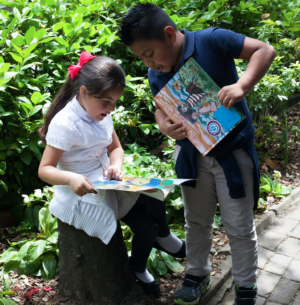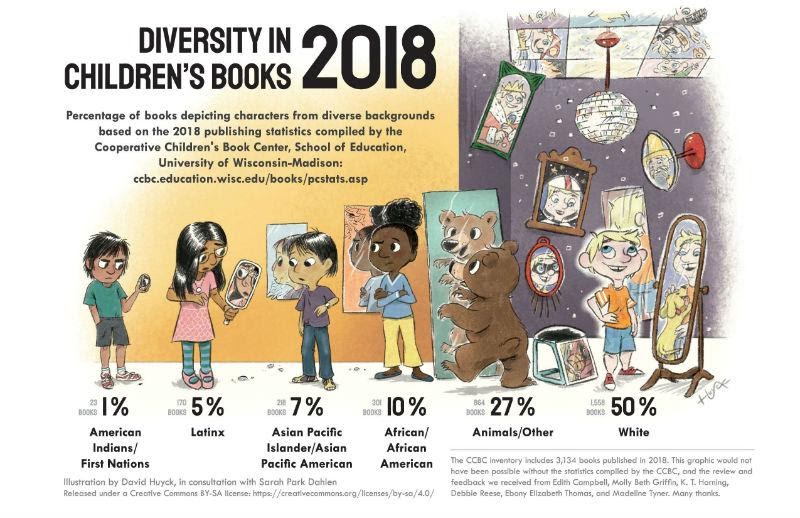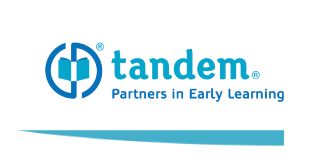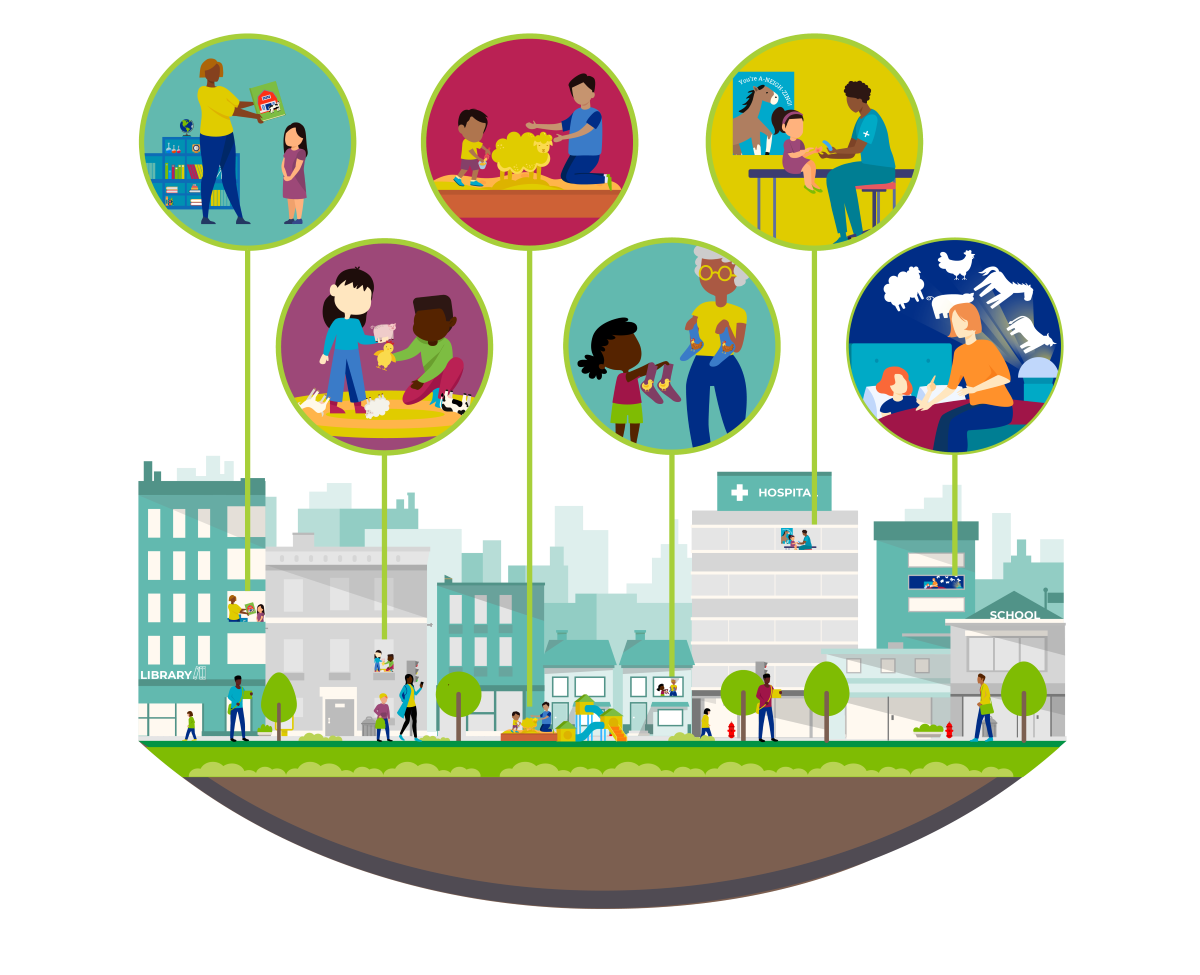Making Room for Everyone: Inside Tandem’s Diverse Children’s Book Collection

If you’re a Tandem partner, you might have heard us talk about our multicultural, multilingual book collection that includes over 1,400 unique titles in 21 different languages, including wordless books. You may have heard us mention that our book collection, which features children and families of color, stands in contrast to the majority of children’s literature. This blog post by our colleague Laura Rodriguez explains what we mean by that.
The importance of school and home libraries that embrace the diversity of our world cannot be understated. When children can see themselves accurately and respectfully portrayed in the books that they read, they feel a connection to the world of books and learning. That connection is critical. Not only does it enhance a healthy self-image that helps lead to high self-esteem, but it might also cause children to want to learn to read.
Learning to read is difficult. Unlike learning to talk or walk, it is not a natural process. Rather, reading is an artificially constructed skill that children must work hard at mastering. Those children who love books from an early age, and who feel a connection to the books they encounter, are more likely to persist in learning to read.
Dr. Rudine Sims Bishop, a literary scholar and professor of children’s literature, described the power of children’s books to provide children with mirrors, windows, and sliding glass doors. According to Dr. Bishop, when children see images in books that depict “culturally conscious” mirrors, then reading becomes self-affirming. Children need mirror books — that is, they need to see themselves portrayed positively in books and media. They also need books that will help them understand the multicultural world we live in. Seeing affirmative depictions of people who look and act differently provides children with doorways to understanding and empathizing with others. Quality children’s books act both as mirrors and doors. These books work to celebrate the similarities and differences that exist among us. In this way, diverse books actively build empathy, resilience, and community.

Despite a continued demand for multicultural books for children, the American publishing market still has a long way to go to achieving this ideal. In 2018, 50% of the new books published for children featured white characters as the protagonists. All other ethnicities, races, or cultures combined only accounted for 23% of the newly published books. To quote Dr. Sims Bishop again, “When children cannot find themselves reflected in the books they read, or when the images they see are distorted, negative, or laughable, they learn a powerful lesson about how they are devalued in the society of which they are a part.¹”
We at Tandem, Partners in Early Learning are actively working to uplift individuals from all groups by purposefully selecting books that provide authentic mirrors and doors for the children and families we serve. Not only does our collection contain a higher proportion of books featuring characters of color, but we also take care to ensure that they don’t contain tacit messages of racism or homophobia.
While books featuring African American characters only accounted for 10% of the new books published in 2018, 30% of the books acquired for the Tandem StoryCycles collection depicted blackness positively. Despite the paucity of books published about Latinx characters or culture, our 2019 additions contained 12% of books that reflected Latinx life respectfully. Taking into account the books we’ve selected for the 2019-20 school year, 65% of Tandem’s books with human characters featured characters of color.
The Cooperative Children’s Book Center, which produced the image of mirrors above, keeps count of diversity measures in children’s publishing and counts the number of books which feature gender expansive characters². “Although it is a slow improvement,” they say, “there are books being published that better represent the vast diversity of identities and experiences within the LGBTQ+ community. In the months and years ahead, we hope to see even more.”
Tandem also strives to provide books which advance an inclusive narrative about gender. While only 2.4% of our books feature explicit members of LGBTQ+ community, many others of our books reject the binary construct that stifles the free and whole expression of children and their families. One recent example of a book with an inclusive message is My Papa is a Princess. The book is about a Papa and his daughter. There are no indications that he identifies as a member of the LGBTQ+ community, but the book does reject the construct of masculinity through its inclusive title and by culminating in an illustration that shows a bearded man dressed like a princess and playing with his child.
Quality book collections make room for everyone, and that is a cornerstone of our StoryCycles® program. Like the Cooperative Children’s Book Center, we will continue to voice the need for diverse books, and we will support the need by purchasing books that depict diversity, buying locally, and buying from diverse authors and illustrators.
To see some of our recommendations for multicultural and inclusive books, check out some of our previous blog posts here, here, and here.
¹Sims Bishop, Rudine. (1990). “Mirrors, Windows, and Sliding Glass Doors.” Perspectives: Choosing and Using Books in the Classroom (vol 6, no 3). Retrieved from http://www.rif.org/us/literacy-resources/multicultural/mirrors-windows-and-sliding-glass-doors.htm
²CCBC 2017 Statistics on LGBTQ+ Literature for Children & Teens. APRIL 6, 2018. CCBlogC. Cooperative Children’s Book Center. Retrieved from http://ccblogc.blogspot.com/2018/04/ccbc-2017-statistics-on-lgbtq.html

Laura Rodriguez
Community Literacy Specialist, Contra Costa
Bay Area native Laura is excited to spread the love of books. Outside of work, she’s kept busy by her two young sons. When she gets a chance, she loves to spend time in the great outdoors.

